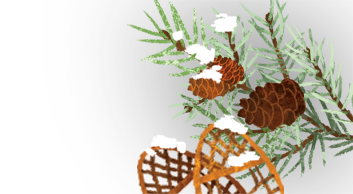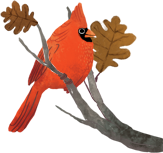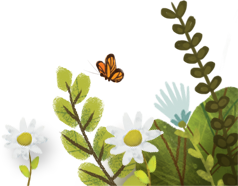- Students should come well dressed for class including coat, hat, and gloves when appropriate.
- All students need to be wearing closed-toed shoes that fit well. Sloppy/loose shoes are hard to climb in.
- If girls wear a dress or skirt, they should wear pants or shorts underneath.
- Review of the vocabulary words before class is helpful.

Rock Climbing and Fossils
| Title | Rock Climbing and Fossils |
| Audience | 5th Grade |
| Offered | September - October |
| Length | 1 hr. 50 minutes (if time allows, students will look around in the Exploration Hall) |
Preparing for this Class
Class Description
This class provides students the opportunity to hike and explore the geologic and human history of the park and how the two are interconnected. Through observing sandstone layers, cave entrances, and the Quarry, we will consider the changes that have happened over geologic time. While in the Quarry, students will look for fossils and work to identify them using an ID sheet with common Ordovician fossils. Students will be able to keep at least one rock containing a fossil if they so desire. In the rock-climbing portion of the class, students will receive an introduction to proper rock climbing techniques and equipment before attempting to climb one of six climbs with varying degrees of difficulty. Benefits to rock climbing include building good communication skills and teaching team-building skills as students help out and encourage classmates. Students should be able to climb at least 2 times before this part of the class is done
Correlation to MN Science Standards
- Explain how, over time, rocks weather and combine with organic matter to form soil. (5.3.1.2.1)
- Explain how slow processes, such as water erosion, and rapid processes, such as landslides and volcanic eruptions, form features of the earth’s surface. (5.3.1.2.2)
- Give examples of how mineral and energy resources are obtained and processed and how that processing modifies their properties to make them more useful. (5.3.4.1.2)
- Give examples of simple machines and demonstrate how they change the input and output of forces and motion. (5.2.2.1.1)
- Identify the force that starts something moving or changes its speed or direction of motion. (5.2.2.1.2)
- Demonstrate that a greater force on an object can produce a greater change in motion. (5.2.2.1.3)
- Recognize that rocks may be uniform or made of mixtures of different minerals. (4.3.1.3.1)
Science Vocabulary
|
Landforms Weathering Erosion Deposition Belay* |
Sediment Abrasion Geology* Sandstone * Carabiner* |
Limestone * Shale * Quarry* Fossil*
|
Living fossil* Trilobite* Cephalopod* Brachiopod*
|









